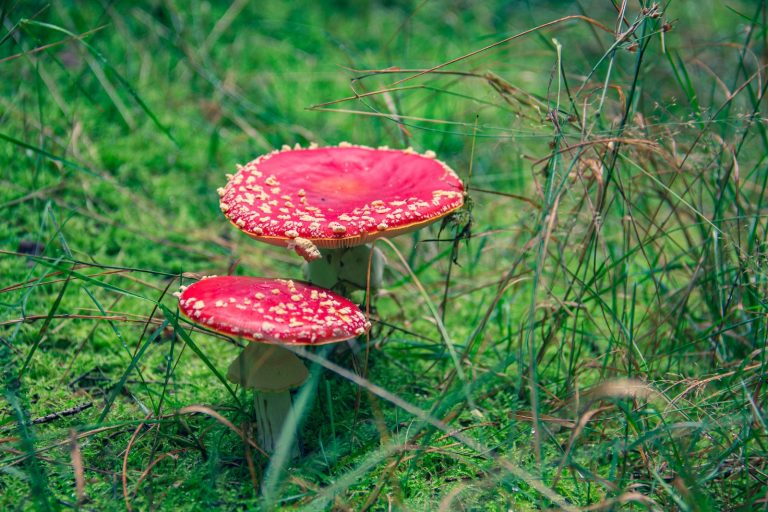Magic mushrooms, commonly known as shrooms, are a class of fungi that contain the psychedelic compound psilocybin. This compound is responsible for causing hallucinations and altering perception when ingested. However, one of the most frequently asked questions about shrooms is, “how long do shrooms last?” This article aims to answer this question in detail and explore the factors that influence the duration of shrooms in the body.
What are Shrooms?
Shrooms, scientifically known as Psilocybin mushrooms, are a type of fungi that contain the psychedelic compounds psilocybin and psilocin. They are popularly used for their hallucinogenic effects. So, consuming a psychedelic mushroom will often result in hallucinations and similar effects.
How Long do Shrooms Last in the Body?
The duration of shrooms in the body depends on several factors such as the species of the magic mushroom ingested, the dose, the individual’s body composition, and the method of use. On average, the effects of shrooms can last between 4 to 6 hours, with some lingering effects potentially lasting into the next day. However, most people return to their normal state within a 24 hour period.
How are Shrooms Detected in Drug Tests?
Despite their psychedelic effects, shrooms are not commonly detected in routine drug tests. This is because the body metabolizes shrooms rapidly, eliminating them from the system within 24 hours. However, more specialized tests can detect psilocybin for up to a week after ingestion. So, if you want to get high on psychedelic mushrooms or psilocybin mushrooms, make sure there are no tests in the upcoming 24 hours.
Urine Tests
Most routine drug tests are urine tests. For most people, hallucinogenic mushrooms are no longer detectable in urine after 24 hours.
Hair Follicle Tests
Hair follicle tests can detect drug use within the past 90 days. However, this type of testing isn’t common due to its cost.
Blood and Saliva Tests
Magic fresh mushrooms are metabolized too quickly for a saliva or blood test to detect them, unless administered within just a few hours of ingestion.
Factors Affecting Duration and Detection of Shrooms
Several factors can affect how long shrooms stay in your system and their detectability in drug tests.
The Species of Mushroom
There are numerous species of psilocybin-containing mushrooms, and the amount of psilocybin varies among different species. The more psilocybin the mushroom contains, the longer it will stay in the body.
The Dose
The amount of shrooms ingested is a significant determinant of how long the substance stays in the body. Higher doses will naturally take a longer time to be completely eliminated from the body.
Body Composition
Individual factors like age, metabolism, and overall health can also influence how quickly shrooms are metabolized and eliminated from the body.
Method of Use
How shrooms are consumed also affects how long they last in the body. Whether they’re consumed fresh, dried, brewed into a tea, or mixed with food can all have an impact. For example, some people consume fresh mushrooms, others go for dried shrooms, and there are also people using shroom tea or magic mushroom chocolate.
Effects of Shrooms
Shrooms can cause various physical and psychological effects. It’s important to note that these effects can vary greatly from person to person, depending on the factors listed above.
Physical Effects
Physical effects of shrooms can include nausea, vomiting, increased heart rate, and uncoordinated movements. In rare cases, consuming poisonous mushrooms mistaken for psilocybin mushrooms can lead to more serious complications like seizures, liver failure, and even death.
Drug abuse is never a good thing, no matter if you are using shrooms for a short psychedelic effect, or you are taking something more serious.
Psychological Effects
On the psychological side, consuming shrooms can cause hallucinations, changes in perception, and altered states of consciousness. These effects can be both positive (e.g., feelings of euphoria, spiritual experiences) and negative (e.g., anxiety, paranoia, fear).
Risks and Side Effects of Shrooms
Despite their popularity for recreational use, shrooms carry several risks and side effects. These include the risk of consuming a poisonous mushroom by mistake, the possibility of having a “bad trip,” and the potential for psychological dependence.
Short-Term Side Effects
The short-term side effects of shroom use can include changes in sense of time, dry mouth, excessive sweating, increased body temperature and blood pressure, loss of appetite, rapid breathing, sleep problems, and uncoordinated movements.
Long-Term Side Effects
Long-term use of dried magic mushrooms can lead to persistent psychological problems, including mood changes, memory loss, and disorganized thinking. In severe cases, individuals may experience persistent psychosis, characterized by ongoing paranoia and hallucinations.
How to Manage Shroom Addiction
While shrooms are not physically addictive, it’s possible to develop a psychological dependence on their effects. If you or someone you know is struggling with shroom use, it’s important to seek professional help. Treatment options can include therapy, medication, and support groups.
Conclusion
While the effects of psychedelic mushrooms can be intriguing and even enjoyable to some, it’s important to remember that they’re not without risks. Understanding how long do shrooms last, their effects, and the associated risks can help individuals make informed decisions about their use. If you or a loved one is struggling with shroom drug abuse, don’t hesitate to seek professional help.
Contact American Addiction centers to get some addiction treatment.


0 Comments